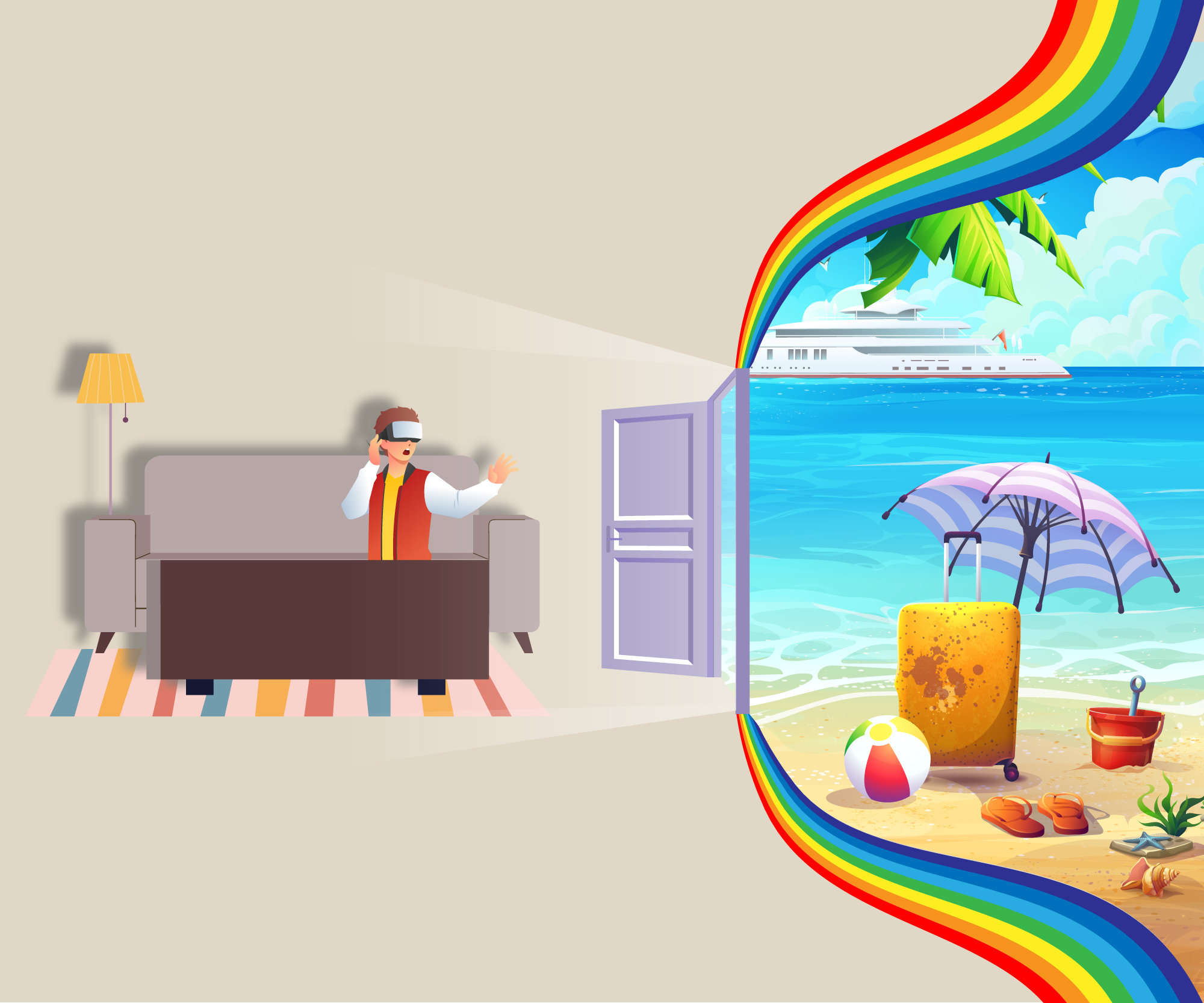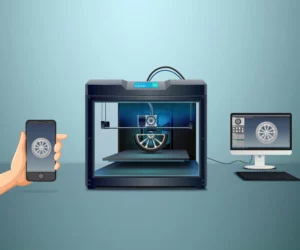
Who doesn’t love the idea of exploring different worlds just by triggering the mind? It’s the whole reason the fictional genre exists—to act as a magic carpet for your imagination. But what if we didn’t always have to tear through chapters of wordy description or sit through hours of poor cinematography to experience that? What if faraway places and exotic cultures could beckon us from within our reach? The world of virtual reality can now take you to different places from the comfort of your home. Climb Mount Everest lying on your bed or visit the pyramids of Egypt sitting on your couch. All of this is possible because of the sudden rise in the use of immersive technology in tourism. Tools like augmented and virtual reality are transforming our worlds.
How is immersive technology used in tourism?
Although the terms virtual and immersive are often used synonymously in this domain, there’s a slight difference between them. Virtual tourism is essentially a hybrid concept that combines the notions of virtual reality and tourism. Virtual tourism takes different forms and comes in varying degrees of technological capabilities. Its simplest form may comprise videos or 360-degree views of different tourist locations.
On the other hand, immersive tourism is a more sophisticated form of virtual tourism that includes immersion into an environment through VR gear—a headset or a simulator. The deeper the travellers immerse themselves in the virtual world, the more natural the experience will be. In this article, we’ll use the terms ‘virtual’ and ‘immersive’ interchangeably.
Virtual reality completely changes your perceived environment by reshaping your entire field of vision. These technologies are redefining our reality and changing what we thought possible. It may also include using various props for other sensations, like gloves (for touch), roller coaster simulators (for movement), water sprays, and so on.
One of virtual tourism’s most remarkable technological feats is the ability to recreate destinations and attractions from the past using current images alongside computer generation projects. Developers are now designing software which allows tourists to visit places that no longer exist or that they do not have permission to access. It would not be an exaggeration to say that because of immersive technology in tourism, no part of the world is inaccessible any longer.
How did the use of immersive technology in tourism grow so fast?
The tourism industry drastically came to a halt as a result of the pandemic. However, the pandemic radically fuelled both the development and demand for virtual tourism. Immersive technology’s growth is one of the most potent transitions in present times. It has and continues to take us beyond the screens. Four aspects have led to this exponential development and growth of the use of immersive technology in tourism:
1. Marketing and promotions
Tourism industry stakeholders like destination management organisations, tour operators, and others operating in the marketing sphere use virtual tourism as a marketing tool. As a result, the virtual interpretation of the holidays seems more lucrative than traditional methods like guidebooks, websites, and brochures. Seeing, hearing, smelling, and experiencing tempt people to go and visit the real destination.
2. Enhancement of the tourism experience
Lately, tourism businesses have adopted virtual technologies to improve the experiences they offer. Museums and amusement parks, for example, are often responsible for inspiring visitors’ desire to visit a place. 5-D rides at amusement parks and sensory activities used at museums, for instance, have massively enhanced the tourist experience.
3. The development of virtual reality
Virtual tourism experiences vary in theme and technological capabilities. However, these experiences generally rely on the premise that they will provide the user with an artificial tourism experience. Typically, these virtual tourism experiences, with the use of technology, will be condensed to highlights or the best bits. For instance, a virtual tourism experience will squeeze a 90-minute bus journey into a 30-minute trip so that tourists may focus on the relevant sights.
4. Impossible adventures through virtual means
The future of the virtual tourism industry will likely see people seeking unbelievable adventures through virtual means. This impossible experience might include going to a destination virtually because they cannot afford the physical experience. For example, a tourist who cannot swim could go deep sea diving virtually. Impossible adventures also include things that aren’t available to humans, like walking on the moon or flying above your favourite city. And with an assist from AI, just think of the accessibility that can be extended to cover special needs.
What are some examples of immersive technology in tourism?
Germany, Spain, and the US are already leading from the forefront in implementing these unique tourist experiences. Let’s look at a few specific instances:
1. German company Timeride offers a virtual tour of the German cities where your guide will take you on a 90-minute journey showing the central scenes of 20th-century Germany. Of course, we haven’t invented the time machine yet. But immersive technology in tourism will not disappoint you when travelling to the Middle Ages.
2. The Tourism Authority of Madrid has started providing a virtual tour to explore the capital of Spain before actually visiting it. All you need to do is book an appointment, and a tour guide will add you to video conferencing, taking you to museums, parks, and the streets of Madrid.
3. Next in the line is US-based virtual tourism company Flyover Zone. They create interactive virtual tours of cultural heritage sites across the world. You can explore Rome, Athens, and Baalbek by tilting your device or VR gear. Flyover Zone also allows users to go back in time and see the world as the ancients did. Interestingly this is also a way of protecting a country’s heritage by showcasing its historical significance.
4. Besides visiting historical sites and other cool, distant places, it is possible to use immersive technologies to create art and hold exhibitions. Artsteps, for instance, is a web-based platform for holding 3D virtual exhibitions and creating virtual art galleries. This feature takes the immersive game one step further.
Will virtual travel replace actual travel?
Virtual travel sounds like the technology of tomorrow, but it isn’t. This innovative form of tourism is growing faster than ever. We all know that the metaverse is now the next big thing. Interacting with other people in an artificial world is almost a reality. But still, some researchers are sceptical of a replacement because it is human nature to explore the unknown or lesser known. The fascination of exploring a place in the virtual world doesn’t mean we will give up the possibility of travelling there. But it will act as a substitute for a specific target audience. Those who cannot travel due to work, physical, or financial limitations will now be able to experience new destinations because of immersive technology in tourism.



